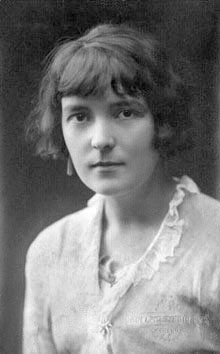Katharine Mansfield (1888 - 1923)
⋮ Audio version below

Katharine Mansfield was born Kathleen Mansfield Beauchamp to a prosperous family in Wellington, New Zealand. Shunning both her family’s wealth and social conventions, Mansfield began writing at an early age, immersing herself in the artistic community, and living intermittently with various female and male partners. She published widely in her own life and her short stories were eventually collected in five volumes. Like many authors of her generation, Mansfield was disillusioned by World War I, and her brother’s death by a hand grenade served as an inspiration for her work, as did her complicated relationship with iconic Modernist authors like Virginia Woolf and D.H. Lawrence. Mansfield died from tuberculosis at the age of 34.
Despite her short life, Mansfield crafted some of the finest avant-garde fiction of early Modernism. Her friend and sometimes rival, Virginia Woolf, claimed that Mansfield was the only author whose prose she ever envied. Many of Mansfield’s short stories are sketches of a single character. Her work values the portrayal of real-life moments over plot development and explores the complexities of human relationships and sexuality. Mansfield was influenced by Russian literature, particularly the work of Chekhov, and her ability to compress complex emotions and subtexts into seemingly simple prose is portrayed in stories such as “The Garden Party” and “The Fly.”